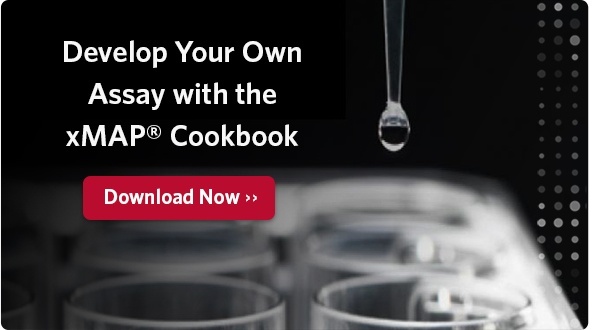The Centers for Disease Control and Prevention (CDC) defines bioterrorism as “deliberate release of viruses, bacteria or other germs (agents) used to cause illness or death in people, animals, or plants.” The Biological Weapons Convention (BWC), opened for signature in 1972, was the first disarmament treaty, which banned development, production, and storage of this entire category of weapons of mass destruction.
Media attention and public interest in bioterrorism, however, have intensified in the last decade. One of the main components of many target nations’ defensive strategies now focus on the development of procedures to respond to potential attacks.
A study recently published in the Journal of Forensic Sciences details how a bead-based liquid hybridization assay on the Luminex® 100™ was used to identify these four pathogenic bacteria:
- Bacillus anthracis (Anthrax)
- Clostridium botulinum (botulism)
- Francisella tularensis subsp. Tularensis (valley fever)
- Yersinia pestis (the plague)
The CDC classifies these four pathogens as category A, high-priority pathogens, because of their ease of dispersal, high mortality rates, potential to cause panic, and need for special emergency response procedures.
According to the study, methods for detecting biological pathogens should consist of the following criteria:
- Quantitative abilities
- Multiplexing capabilities
- High specificity
- High sensitivity
Traditional detection methods, such as microscopic identification of morphological characteristic differences of the bacteria, enzymatic tests, and staining methods can be less specific than needed, and can be time-consuming and inefficient. Single-plex assays are also impractical, as it would be necessary to screen repeatedly for every possible identity of pathogenic bacteria.
Multiplex assays are ideal, however, and techniques that rely on genetic markers work well with multiplexing.
Ribosomal RNA genes code for structural RNA molecules involved in essential biological processes, so they minimize mutations, which makes these genes good candidates for use in biological pathogen detection. Other genes related to the toxicity of the organism may also be added to a pathogen detection array as use of multiple genetic markers when screening for a pathogenic organism can help increase confidence in detection and identification.
The study also suggests the importance of finding more probes that can be used for positive identification to continue research in this field. Multiplexed assays are optimal for this type of pathogen research, as the sample can be simultaneously tested for multiple markers, “each being derived from a sequence unique to a particular genus or species.”
Multiplex assays help researchers to distinguish between toxic and genetically modified nonpathogenic strains.
Resources
- Getting Started with xMAP® Technology [VIDEO]
- Browse 1,200+ Partner Kits with xMAP® Kit Finder [ONLINE TOOL]
- xMAP® Cookbook to Design Your Own Assays [DOWNLOAD]
- Luminex® 200™ Resources Make Maintenance More Manageable [BLOG]
- Luminex Instrument Support Videos and Support Center [SUPPORT]
